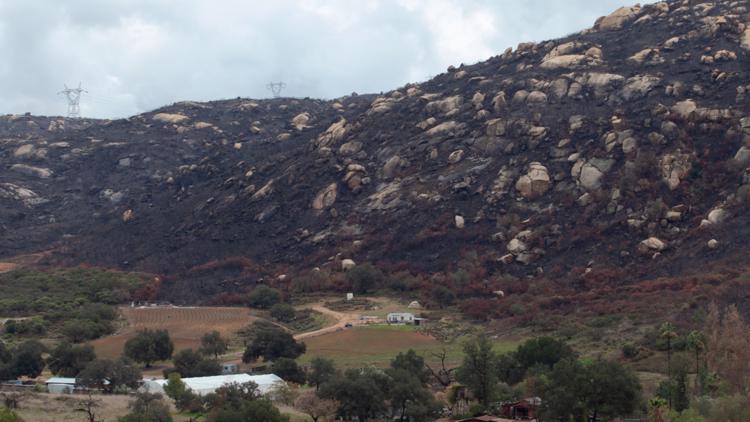SAN DIEGO COUNTY, Calif. — Three wildfires have crept close to Nathan Rakov’s 30-acre chicken ranch in rural Alpine since he moved there in 2006. If his barn, coops and storage rooms burned down, he’d struggle to rebuild because he hasn’t found a complete and affordable insurance policy.
For about the past seven years, the converted red barn where he lives and another house on the farm have been insured by a last-resort, bare-bones plan that’s required under California law to provide coverage to those who have been repeatedly turned down for insurance.
But last year Rakov tried to add a new $60,000 tractor to the plan and it got rejected. Farms aren’t eligible, he was told in a letter in late September.
Like other farmers, he was out of insurance options, at least when it came to his tractor. What the farmers are experiencing is an unwillingness by California insurers to take on the risk to provide coverage in areas where brush fires are becoming more severe and frequent.
Rakov turned to the San Diego County Farm Bureau for help. That sparked a statewide effort to try to get farm property and equipment covered under last-resort policies. Before he got his rejection, agriculture advocates didn’t realize farms were excluded.
The California Farm Bureau Federation has now taken up the issue, getting regional bureaus across the state to collect examples like Rakov’s. So far, the federation has learned of about 500 hundred farmers in Napa, Sonoma, Monterey and San Luis Obispo counties who have been unable to renew their insurance policies since 2019. At least 15 in Sonoma and 10 in Monterey also got rejected for the last-resort coverage.

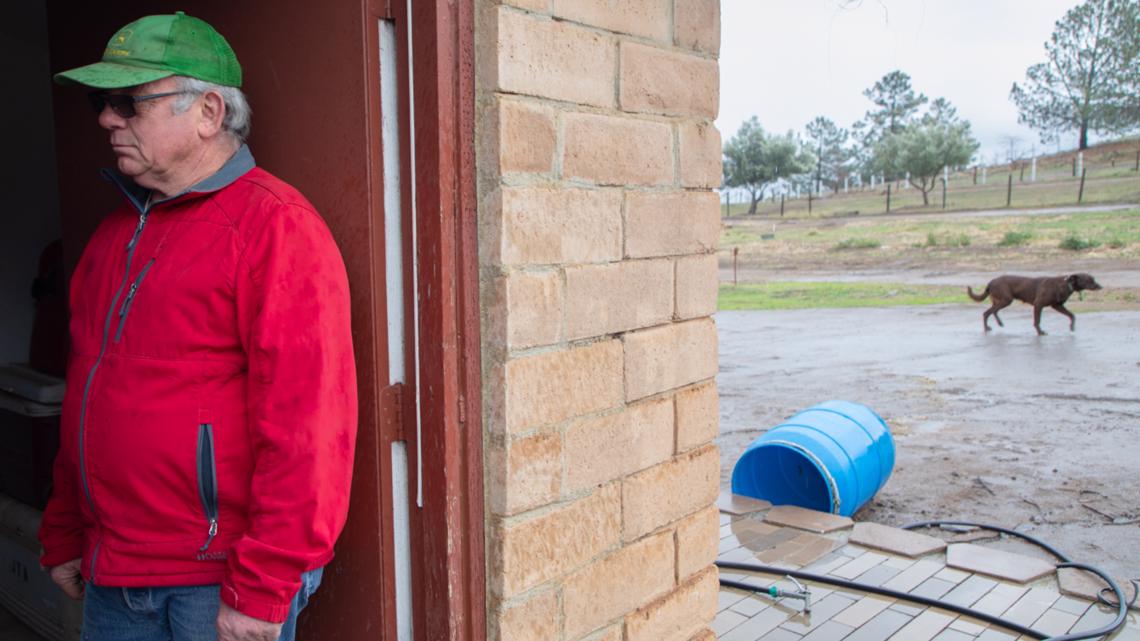
The federation has been talking with insurance companies and state Sen. Ben Hueso and Senate President Pro Tem Toni Atkins to find ways to clarify that farms are eligible for the last-resort insurance. Both are San Diego Democrats.
Rakov said he doesn’t believe his insurance will help him recover fully in a fire. He’s focused on measures he can take himself to prevent a blaze from destroying his farm, like clearing his land of brush.
“We'd like to think that the system is going to work and they're going to come up with ways to give us credit for doing mitigation,” Rakov said. “For the most part, insurance companies have just redlined certain ZIP codes, so I don't have high hopes for the future.”
Less insurance available after big fires
In recent years, insurance companies in California have been facing bigger losses and longer fire seasons. A hotter and drier climate and fire suppression policies are contributing to the destructive fires.
That’s led to a “tightening in the market” for all types of policies in fire-prone areas, said Jeremy Merz, vice president of state government affairs at the American Property Casualty Insurance Association, which represents insurers.
It’s affected homeowners but also farmers and ranchers, Merz said. Typically, agricultural businesses get commercial policies with special rates to cover buildings like barns or wineries.
We want to hear from FAIR Plan customers
If you use the California FAIR Plan to insure your home, farm or other property, we want to hear from you. Tell us how it’s working for you.
Just email backcountry reporter Camille von Kaenel: camillevonkaenel@inewsource.org
The California Department of Insurance doesn’t currently track how many of the state’s farmers and ranchers have been denied coverage.
But the department does collect data on homeowner policies. Its latest figures from a report last year show a 31% increase from 2018 to 2019 in California homeowners not having their insurance policies renewed. That compares to a 65% increase in San Diego County for the same period.
Though no reason is cited, the agency said most non-renewals occur in areas at high fire risk.
Rakov knew rural Alpine was a fire-prone area when he moved there from Mission Bay. He was seeking a quiet retirement from an automotive repair business he had run. The 65-year-old now does the paperwork for the ranch, which he’s still paying off. Two ranch managers also live on the property and mostly sell the chickens and eggs to a downtown San Diego distributor.

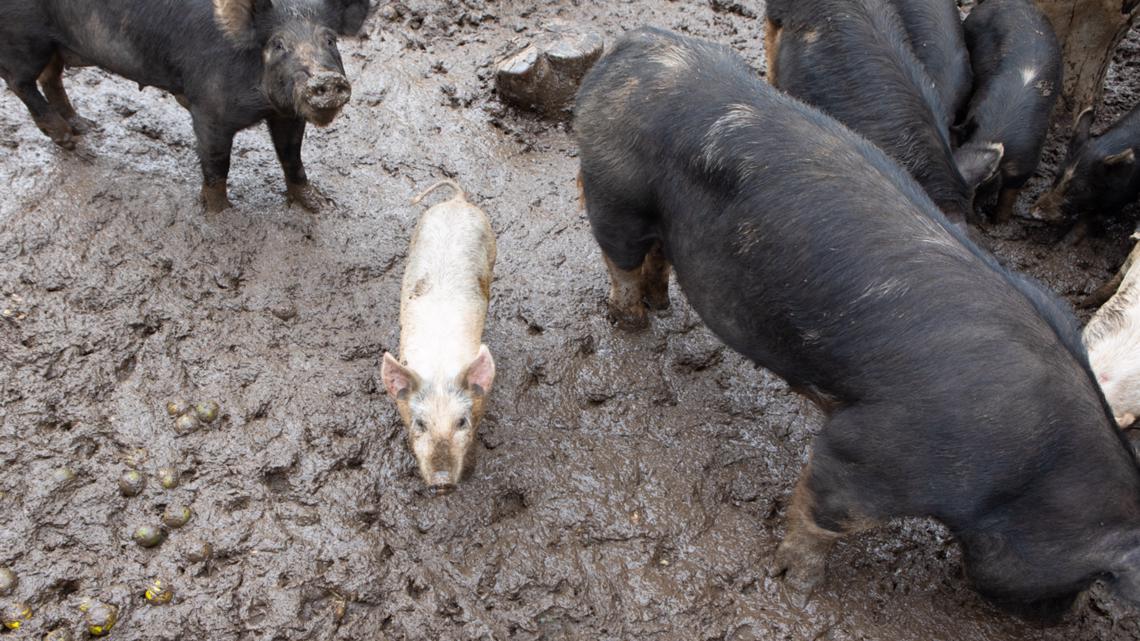
At any time, the ranch is home to 800 to 1,500 chickens, a couple hundred ducks and dozens of pigs. Sheep and cattle graze on the brush around the property to lower the fire risk.
But that hasn’t made much of a difference in Rakov’s search for a good insurance plan. Farmers Insurance stopped covering his property about seven years ago, so he switched to the last-resort California Fair Access to Insurance Requirements Plan, known as the FAIR Plan.
It is not a state agency but an insurance pool required under a 1968 California law to provide basic business and home insurance to those who have run out of other options. It has seen rapid growth: In San Diego County, the FAIR Plan wrote 8,663 homeowner policies in 2019, including nearly 4,000 new ones. But it covers less than other plans and could cost you more.
Rakov’s FAIR Plan is for about $255,700 in coverage for his converted barn and the other house and garage on his property. He pays nearly $2,600 to insure those buildings. No personal property, fencing, other structures or equipment are covered.
Before trying to add the tractor to his last-resort policy, he said he didn’t realize farms couldn’t get coverage from the FAIR Plan.

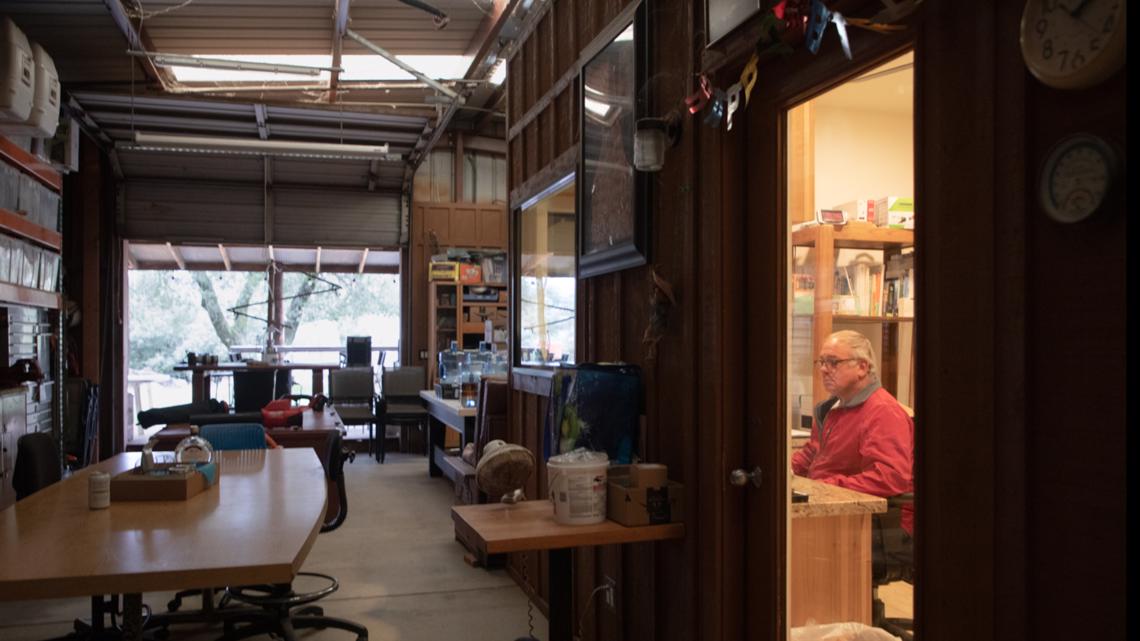
The exclusion is written in state insurance law, which “specifically and expressly prohibits the FAIR Plan from covering automobiles or farm risks,” said Anneliese Jivan, president of the California FAIR Plan Association, in an email.
Jivan said the FAIR Plan “is working directly with the California Farm Bureau and the Legislature to help find a solution to address the lack of available coverage for those farmers in the voluntary insurance market.”
Adding to the confusion is that non-commercial farms — or those only for personal use — may be able to get coverage under the plan’s guidelines.
After Rakov received his denial letter, he said he wasn’t sure what property on his ranch was eligible and feared he would lose all of his insurance. So far, that hasn’t happened and he ultimately found a company to insure the tractor.
“The bank's covered, my car's covered, the tractors are covered,” Rakov said. “I have a little liability (insurance). But if there were really a big loss, I'd be in trouble.”
Small farms at stake
When the Valley Fire erupted last September near Alpine, Rakov stayed home because he wanted to be able to take care of his animals. He knew not all of them could be evacuated. He watched the flames and a column of smoke rise from the hill behind his home. The fire ended up burning 16,390 acres and destroying 30 homes.
San Diego County staff also tallied $1.58 million in damage to agricultural buildings and crops, including at a vineyard and a ranch.
The largest losses were at the 40-acre No Boundaries Farm, a hemp-growing operation owned by Eddie Campos and his children.
Before the fire, he tried to get insurance companies to cover his property but said he got turned down several times. Even the FAIR Plan denied his application, though the reason was the condition of an old mobile home on the property and not his occupation as a farmer.
The fire destroyed his indoor grow rooms, storage and office buildings, and a home on the property where his son lived. None of it was insured. Campos called it “very devastating” and is trying to rebuild.

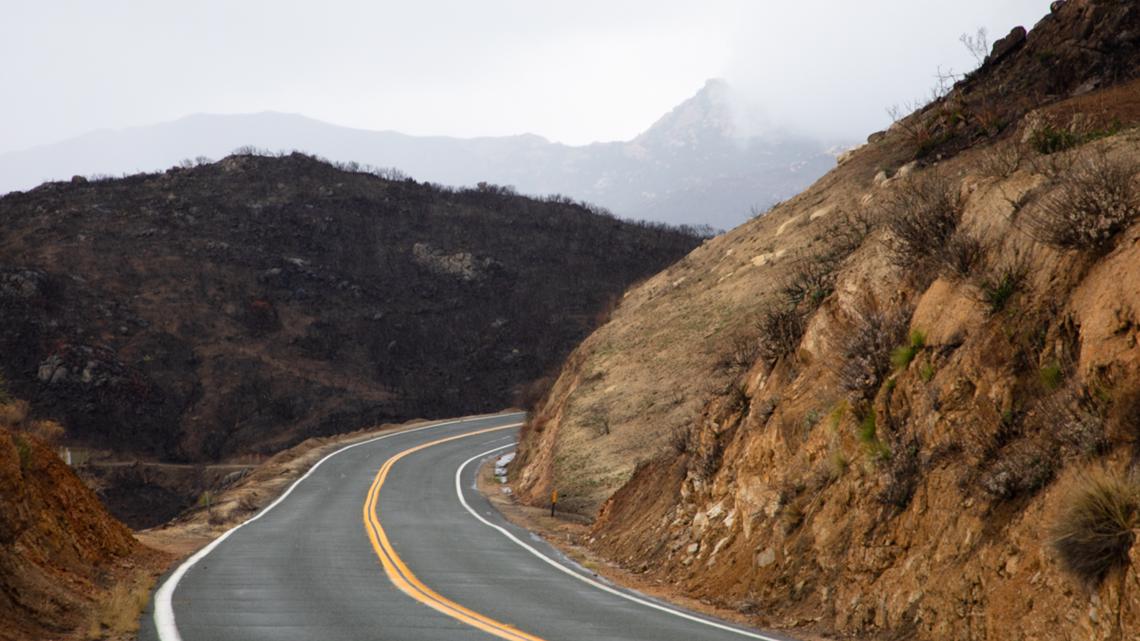
Hannah Gbeh, executive director of the San Diego County Farm Bureau, said available and affordable insurance is “vitally important to the economic viability of nearly everybody in our backcountry San Diego communities.”
While many brush fires begin in the backcountry, she said they are not limited to rural areas: On Jan. 20, a brush fire prompted evacuations in Carlsbad, a few miles from the flower fields.
The county’s agriculture industry was worth nearly $1.8 billion in 2018, including shrub and flower nurseries and fruit farms.
Gbeh said she’s grateful that Hueso and Atkins recognized the importance of agriculture to the region and are attempting to address an issue that started here but affects farmers throughout the state.
Hueso, who represents parts of southern San Diego County and all of Imperial County, wants to fix the “broken FAIR Plan” and is still reviewing options, his spokesperson said in an email.
Atkins’ office said the Senate Insurance Committee could hold a hearing this month on coverage availability for farmers and others, though no date has been set. Hueso serves on the committee.
inewsource is a nonprofit, independently funded newsroom that produces impactful investigative and accountability journalism in San Diego County. Learn more at inewsource.org.


